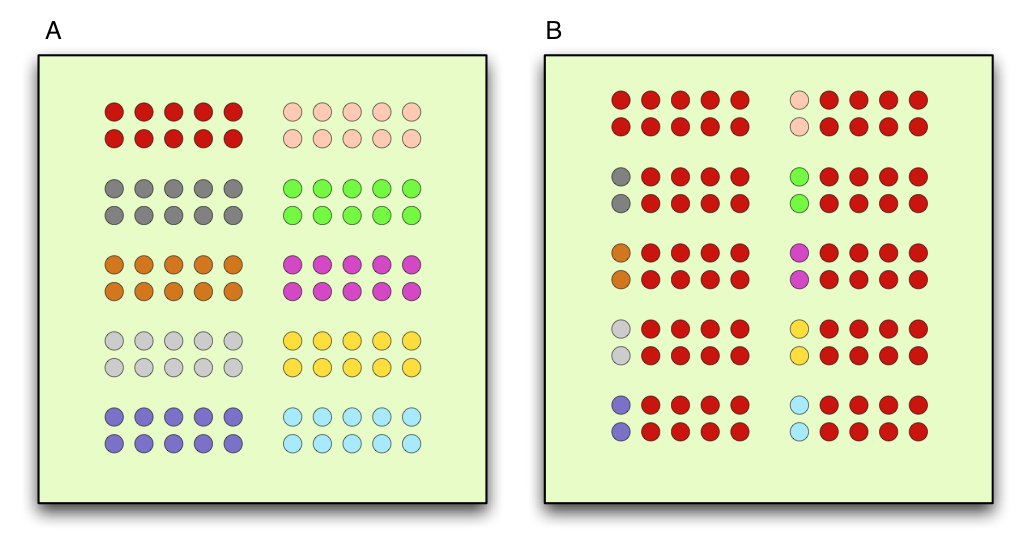2.3. 5: Simpsons diversity index
As long ago as 1878 Alfred Russel Wallace recognised that the biota of the tropics was more abundant and more varied than of the temperate regions of Europe. The problem for ecologists is how to compare the differences between regions or even single ecosystems.
The simplest measure of diversity is just to count the number of species and this is often referred to as species richness. However species richness takes no account of differences between populations of the species encountered.
 The two model ecosystems above have exactly the same species richness but the evenness between each species is different in each ecosystem. Ecosystem A has a more even make up than ecosystem B: this evenness or heterogeneity between species is called species evenness.
The two model ecosystems above have exactly the same species richness but the evenness between each species is different in each ecosystem. Ecosystem A has a more even make up than ecosystem B: this evenness or heterogeneity between species is called species evenness.
Species diversity is best describe as combination of richness and evenness. Over the last century ecologists have developed various formula to measure Species diversity.
One of the most common indices of species diversity is the Simpson’s index. In Environmental Systems and Society we use a derivative of the index with the formula.
Where:
D = diversity index
N = total number of organisms of all species found n = number of individuals of a particular species
n = number of individuals of a particular species
|
Species |
Number of individuals in Ecosystem 1 |
Number of individuals in Ecosystem 2 |
|
A |
23 |
2 |
|
B |
28 |
2 |
|
C |
22 |
1 |
|
D |
27 |
93 |
|
Total individuals in ecosystem |
100 |
98 |
For Ecosystem 1:
Simpson’s Diversity Index =
100 x (100 – 1)
[23x(23-1)] + [28x(28-1)] + [22x(22-1)] + [27x(27-1)]
= 4.08
For Ecosystem 2:
Simpson’s Diversity Index =
98 x (98 – 1)
[2x(2-1)] + [2x(2-1)] + [1x(1-1)] + [93x(93-1)]
= 1.11
From this it can be seen that ecosystem 1 has the highest index of diversity. The larger then Simpson’s index the more diverse. Increasing diversity tends to suggest more stable ecosystems with more connections within them. However care needs to be taken when forming a Research Question involving diversity. It is very important to know exactly what you are comparing: Diversity surveys tend to focus on particular groups within ecosystems rather than the full system itself so a salt march ecosystem may have quite low plant diversity but very high bird diversity. A second problem is that diversity may change with season. These are just two questions that need to be thought about when using diversity indices.
